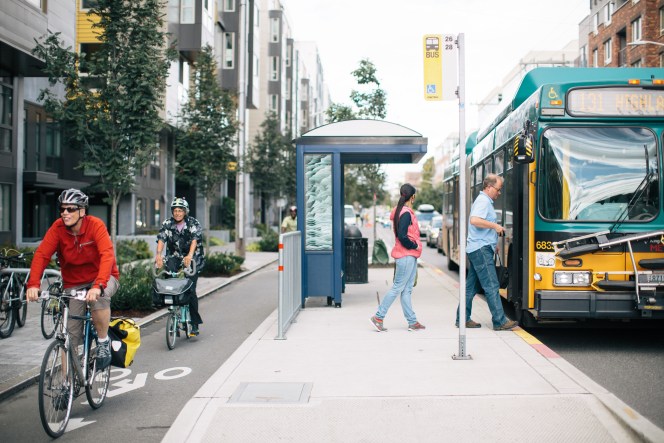New traffic and transit data is out for 2016, and the news is not good.
Driving mileage increased for the fifth straight year, the Federal Highway Administration reports in a statement that celebrates record traffic levels as a boon for the nation. Americans logged 3.2 trillion miles last year. Traffic in December 2016 increased 0.5 percent compared to the previous December.
Meanwhile, transit ridership decreased in almost every major city. But there were two cities that bucked the trend -- Seattle and Houston, which posted 4.1 and 2.3 percent increases, respectively.
Those two outliers share one thing in common: In addition to expanding light rail, they're both redesigning their bus networks.
Houston launched a totally redesigned bus network in 2015. The new system is designed to increase access to bus service that arrives at least every 15 minutes, as well as expand service on weekends and evenings. According to the FTA data, bus ridership in Houston grew 3.3 percent year over year.
Meanwhile, Seattle has quietly done something similar, says Kirk Hovenkotter, National Network Coordinator at the nonprofit advocacy organization TransitCenter. The city has been systematically rethinking its bus routes one quadrant of the city at a time, seeking to optimize the bus network while it expands light rail routes, Hovenkotter said.
"Houston was a case where its transit network served a city that didn’t exist anymore, one where people only worked 9 to 5," he said.
A number of other transit agencies have outdated bus networks and are looking at system redesigns. Columbus will launch a redesigned bus network this spring, and Austin (where ridership fell a staggering 12 percent in 2016) is considering one as well.
The new FTA data suggest that the attention Houston and Seattle pay to their bus systems distinguishes them from other cities that have expanded rail transit. Los Angeles, which has spent billions on new light rail, saw a 7.6 percent decline in transit ridership in 2016. And in Denver, which added a commuter rail line to the airport last year, ridership fell 1.2 percent.






